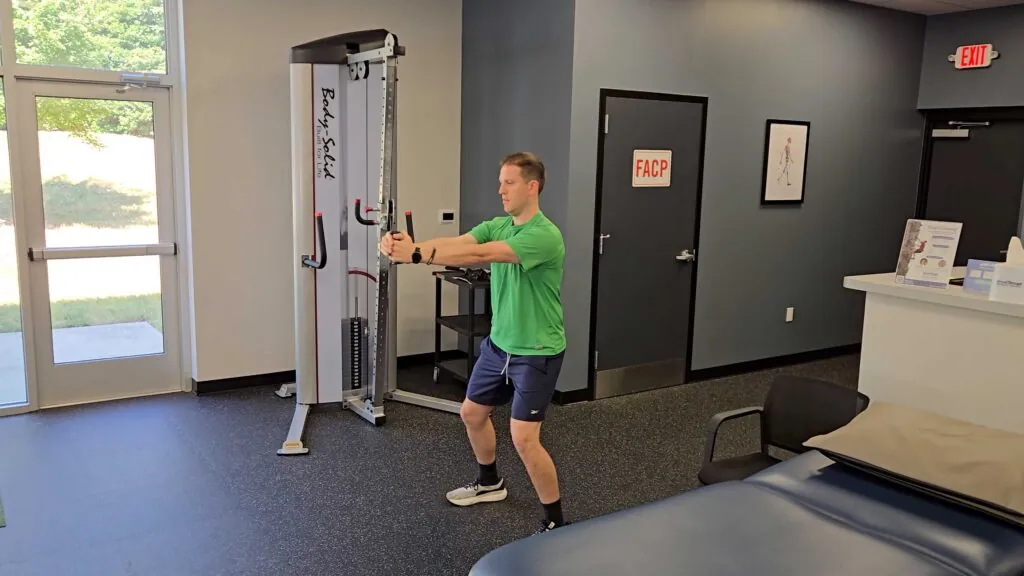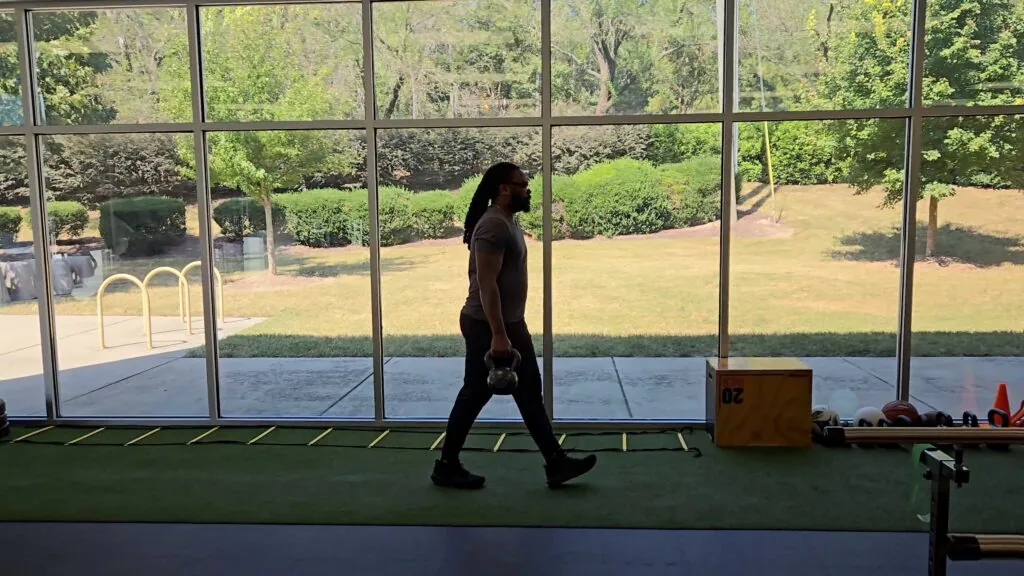Back pain is one of the most common health issues in the United States. At any given point, 26% of adults in the U.S. have back pain. Back pain can range from an acute injury to a chronic issue that doesn’t seem to go away.
What is the Best Exercise for Back Pain?
Here’s the secret that most articles won’t tell you: there isn’t one. Back pain is one of the most complex topics in healthcare. There are countless potential causes, and they’re all influenced by things far beyond muscles and joints: stress, sleep, diet, finances, daily activity, and more.
Asking “What’s the best exercise for back pain?” is a lot like asking, “What’s the best medicine if you’re sick?” It depends—what type of illness is it? Are you allergic to anything What dose has worked for you in the past? In the same way, an exercise that helps someone else might actually aggravate your symptoms. That’s why having an individualized treatment plan from a physical therapist is so important.
That said, there’s a principle worth keeping in mind: a stronger back is usually a more resilient back. In a previous article, we talked about back pain prevention, and one of the key takeaways was that strength helps reduce the risk of recurring pain.
So while there’s no one-size-fits-all cure, there are movements that can help almost anyone develop a stronger, more durable back and core. If you’re dealing with significant or persistent pain, you’ll want to work with a PT who can tailor things to your needs.
Below, I’ll cover four exercises that can help bulletproof your back, along with a quick breakdown of what the “core” actually includes.
The Back’s Role in Core Strength
When most people hear the word “core,” they think abs. But in reality, your core includes all the muscles that support and stabilize your spine: front, back, and sides. The spine itself moves in four key ways: flexion (bending forward), extension (bending backward), rotation (twisting), and side bending. A balanced core training program should challenge each of these motions and build stability in between them. Your back just happens to be one of the biggest and most important parts of your core.
Four Back Exercises for a Strength & Resilience
1. Deadlift

Deadlifts are one of the best ways to strengthen your posterior chain and train back extension. I don’t think there is any one best variation, so barbell, kettlebell, hex bar, or dumbbells are all excellent choices and can be scaled to your experience level.
How to do it in 5 steps:
- Stand with feet about hip-width apart, weight close to your shins
- Hinge at your hips and grasp the barbell, kettlebell, or dumbbells
- Keep your back flat, brace your core, and drive your feet into the floor
- Stand tall by extending your hips and knees together
- Lower the weight back down under control, keeping it close to your body
2. Pallof Press

The Pallof press is an anti-rotation exercise. Instead of moving your trunk, the goal is to resist rotation while pressing a band or cable straight out in front of you. This builds core stability.
How to do it in 5 steps:
- Anchor a resistance band or cable machine at chest height
- Stand sideways to the anchor point with feet shoulder-width apart
- Hold the handle or band at your chest with both hands
- Press your arms straight out, resisting the band’s pull to rotate you
- Hold briefly, then return to the starting position and repeat
3. Body Saw Slider Plank

When it comes to flexion, most people think sit-ups. I’m not inherently against sit-ups, they can be fine for many people. However, in my clinical and even military experience of doing and seeing thousands of reps, I’ve found that it’s fairly common for sit-ups to turn into back pain. With anchored feet, the hip flexors often take over, and since they attach to the low back, high reps on an already irritated spine can be problematic. That’s why I prefer to start with an exercise that challenges the abs directly without relying heavily on the hip flexors. One option is the body saw slider plank.
How to do it in 5 steps:
- Begin in a forearm plank position with feet on sliders
- Brace your core and lock your body in a straight line from head to heels
- Press your forearms into the floor and use them to slowly push your body backward, letting your feet slide
- Keep your hips level, then use your forearms to pull your body back toward the starting position
- Continue sawing back and forth under control for the desired number of reps or time
4. Suitcase Carry

This last one works on the side-bending aspect of spinal control. By grabbing a heavy weight in one hand, your opposite side must fire to keep you upright. It’s simple, but incredibly effective for building real-world strength and core resilience.
How to do it in 5 steps:
- Grab a heavy dumbbell, kettlebell, or farmer’s handle in one hand
- Stand tall with feet shoulder-width apart and shoulders square
- Walk forward slowly and deliberately, resisting any leaning or twisting
- Keep your core tight and your gaze straight ahead
- Walk for distance or time, then switch hands and repeat on the other side
Find a PT Clinic Near You!
Building a Back-Friendly Exercise Routine
There may not be a single “best” exercise for back pain, but there are smart ways to train your core so your back is stronger and less prone to irritation. Deadlifts, Pallof presses, body saw slider planks, and suitcase carries each target different aspects of spinal stability and motion. Combined, they give you a well-rounded plan to build resilience. As always, if you’re dealing with ongoing or severe pain, working with a physical therapist can help you find the right variations and progressions for your body.


